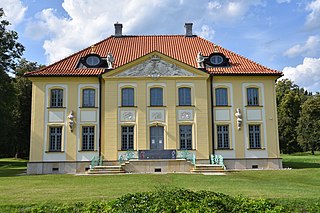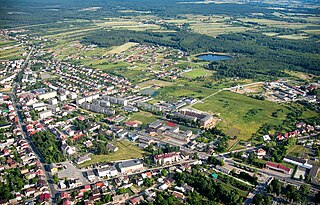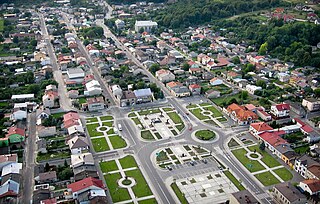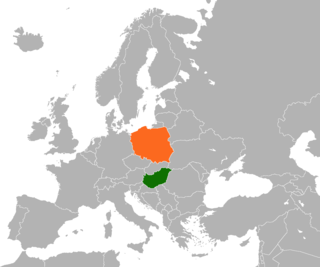
Dąbrowa Białostocka is a town in Sokółka County, Podlaskie Voivodeship, Poland. As of December 2021, the town has a population of 5,305.

Choroszcz is a town in north-eastern Poland, located in Białystok County, Podlaskie Voivodeship, seat of Gmina Choroszcz.

Suchowola is a town in north-eastern Poland in Sokółka County in the Podlaskie Voivodeship, located on both banks of the Olszanka River. Its population is 2,196 (2017).

Suraż is a town in north-eastern Poland situated in the Podlaskie Voivodeship, seat of Gmina Suraż in the Białystok County.

Węgrów is a town in eastern Poland with 12,796 inhabitants (2013), capital of Węgrów County in the Masovian Voivodeship.

Tuszyn is a small town in Łódź East County, Łódź Voivodeship, central Poland, with 7,237 inhabitants (2020). It is located in the Sieradz Land.

Pajęczno is a town in Poland, in Łódź Voivodeship, about 40 kilometres north of Częstochowa. It is the capital of Pajęczno County. Population is 6,651 (2020). It is located in the Sieradz Land.

Poddębice is a town in central Poland, in Łódź Voivodeship, about 40 km northwest of Łódź. It is the capital of Poddębice County. Population is 7,245 (2020). It is located within the historic Łęczyca Land.

Kamieńsk is a town in Poland, in the Łódź Voivodeship, in Radomsko County. As of 2020, it had 2,703 inhabitants. It is located in the Sieradz Land.

Borek Wielkopolski is a town in Poland, in the Gostyń County in the Greater Poland Voivodeship, with 2,485 inhabitants as of June 2021.

Golina is a town in Konin County, Greater Poland Voivodeship, in central Poland, with 4,398 inhabitants (2010). It is located 12 km (7.5 mi) west from Konin.

Wielichowo is a town in Grodzisk Wielkopolski County, Greater Poland Voivodeship, in western Poland, with 1,746 inhabitants (2010).

Ślesin is a town in Konin County, Greater Poland Voivodeship, in central Poland, with 3,200 inhabitants (2010).

Ostroróg is a town in Szamotuły County, Greater Poland Voivodeship, Poland, with 1,962 inhabitants (2010).

Działoszyn is a town in Pajęczno County, Łódź Voivodeship, in south-central Poland, with 5,627 inhabitants as of December 2021.

Radashkovichy is an urban-type settlement in Maladzyechna District, Minsk Region, Belarus. As of 2023, it has a population of 6,225.
Szczuki is a village in the administrative district of Gmina Płoniawy-Bramura, within Maków County, Masovian Voivodeship, in east-central Poland. It lies approximately 9 kilometres (6 mi) south-west of Płoniawy-Bramura, 11 km (7 mi) north-west of Maków Mazowiecki, and 80 km (50 mi) north of Warsaw. It is situated on the Węgierka River, a tributary of the Orzyc River.

Poland–Hungary relations are the foreign relations between Poland and Hungary. Relations between the two nations date back to the Middle Ages. The two Central European people have traditionally enjoyed a very close friendship, brotherhood and camaraderie rooted in a deep history of shared rulers, cultures, struggles, and faith. Both countries commemorate their fraternal relationship on 23 March.

Turks in Poland are people of Turkish ethnicity living in Poland who form one of the country's smaller minority groups.
Wylazłów is a village in the administrative district of Gmina Poddębice, within Poddębice County, Łódź Voivodeship, in central Poland.



















